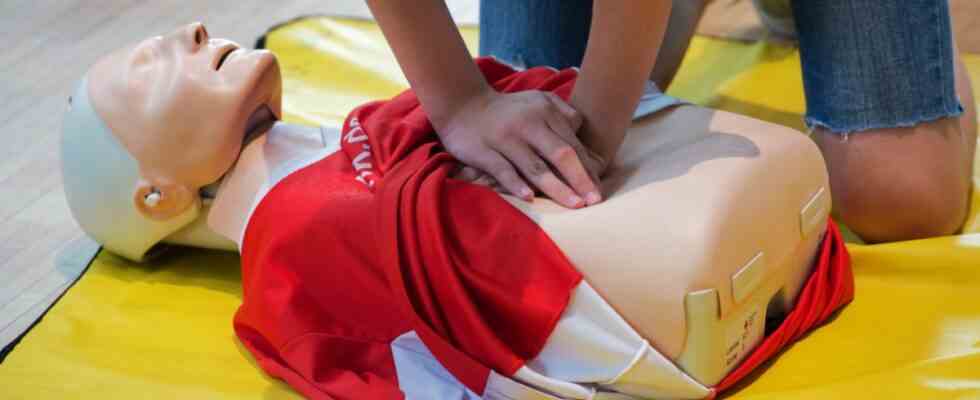One of my patients was with us because he had collapsed at work. cardiac arrest. It took 13 minutes for paramedics to arrive and 45 minutes for paramedics to arrive. Both are too long. But if the capacities are as they are due to illness and high deployment numbers, then that leads to times like this. First aiders are all the more important. If the man’s colleagues had not been there immediately and started resuscitation, he would not have survived the incident.
In a cardiac arrest, every second counts. After about three minutes in which nothing happens, the first brain cells die. If the resuscitation begins then or even later, the person concerned can make it. But as time goes on, the risk of permanent brain damage increases. So: The earlier the resuscitation begins, the better.
The problem: Many people have little knowledge of first aid. You took a driver’s license course a long time ago and have never had anything to do with it since. As a result, an inhibition threshold easily builds up, and resuscitating someone then takes an unbelievable amount of effort. So it can happen that in the end no first aid is given – for fear of doing something wrong.
Yes, during resuscitation it can sometimes crack and a rib is broken. But how do you say cynically: Then at least it’s easier – a chest with a broken rib is easier to push down. It’s important to remember that someone with cardiac arrest is dead. If nothing is done, it will remain so – the heart will not just start beating again. However, if first responders intervene quickly, then at least he has a chance.
Intensive care specialist Pola Gülberg from the Ebersberger district clinic.
(Photo: Peter Hinz-Rosin)
The inhibition threshold to resuscitate someone can be lowered. Various aid organizations offer first aid courses, sometimes refresher courses. There is also the so-called “heart saver”. This is a joint concept of the “Federal Working Group on First Aid” in which resuscitation is practiced on a dummy. There are often stands of the aid organizations at trade fairs, for example at the volunteer fair in Ebersberg. I’m with the BRK myself and have been there a few times. Unfortunately, even then, many adults are reluctant to practice on the doll – in contrast to their children.
Thanks to his first aiders, my patient was able to walk out of the intensive care unit after a good three weeks. By the way: before his collapse he had been suffering from pain in his left arm for three weeks. This can be a harbinger of a heart attack, especially in men.
Pola Gülberg is an intensive care nurse. In this column, the 38-year-old talks about her work at the district clinic in Ebersberg every week. The collected texts are below sueddeutsche.de/thema/Auf Station to find.

